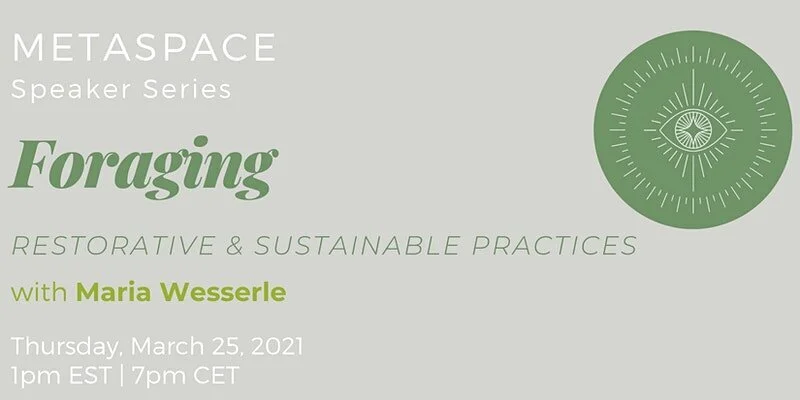Summer is here and the foraging season is in full swing! One of the great things about foraging is its relative accessibility and low input cost. That said, there are some tools, guides, and gadgets that will help you in your practice. Keep in mind that these things aren’t absolutely necessary. If cost is a problem, you can get some of these guides for free online or from your local library, and some of these tools can be found at thrift stores or online second-hand retailers. Also, this list ends with tip that’s completely free!
Read MoreMaria Wesserle of Four Season Foraging participated in the March MetaSpace Speaker Series event with Rachel Holmes. Watch the replay here and learn about connecting with your land, restoring your local ecosystem, and practicing sustainable foraging.
Read MoreHow many wild edibles grow in your area? The answer may surprise you!
I challenged myself to find as many wild edibles as possible just a few blocks from my apartment. The final count: 43! Some of these are native plants used in landscaping, while others are cultivated plants that sometimes grow in the wild. Still, an impressive number after just a simple search.
Read MoreRead MoreAnd I looked, and beheld a pale horse: and his name that sat on him was Death, and Hell followed with him. And power was given unto them over the fourth part of the earth, to kill with sword, and with hunger, and with death, and with the beasts of the earth.
-Revelation, 6:8
Navigating the ins and outs of foraging can be tricky! After the long process of learning how to identify plants and other forageables, you then must find places where you’re actually allowed to harvest them. This isn’t always easy, especially for those of us living in cities. This guide is intended to help you get out there and start picking, without getting into trouble! Since I live in the Twin Cities, most of the information will pertain to this area. However, you can use the information herein to do some research into your locality, including city parks, state parks, state forests, and other areas.
Read MoreSustainability is a huge buzzword these days. Sustainable products and services are in high demand, and businesses are cashing in on the trend. But what does it actually mean to be sustainable? Does it mean buying reusable straws, installing energy-efficient lightbulbs, and recycling? To me— no. For something to be truly sustainable, it must be viable forever— or at least as long as the Earth is around. It must encourage balance rather than produce a deficit. Otherwise, that deficit increases as long as the product is made, throwing systems off balance and wreaking havoc on the environment and the beings that live in it.
What if there were a different way? What if humans could tend to the Earth and each other while providing for their needs? What if we didn’t need to ravage the Earth to live on it?
Read MoreWintertime in the north is often seen as barren: birds fly south, animals go into hibernation, plants die or drop their leaves and go dormant. The landscape often looks grey, empty, and bleak. However, for the adventurous naturalist, winter can be as great a time of learning and discovery as other seasons. It is possible to practice plant identification in the winter; in fact, I encourage it! Learning to recognize plants year-round is a valuable skill that helps improve your foraging practice. To that end, I have created a short guide on getting started with winter plant identification! Unfortunately I can’t provide a comprehensive manual to identifying every single plant you’ll find in winter, but I can provide general guidelines and recommend resources to learn more.
Read MoreI’m honored to have appeared on Food Freedom Radio today with renowned forager and author Sam Thayer and host Laura Hedlund. Watch the interview above, or if you live in the Twin Cities area, tune into AM 950 this Saturday at 8am!
Read MorePart two of winter foraging! Like the first part, this video is less focused on detailed plant identification and more stream-of-consciousness general information. It's meant to show the diversity of wild edibles you can forage in the winter, and get you excited about trying it yourself!
Read MoreI frequently get questions about winter foraging, so here is a short video going over some of the things you can find during the cold months. This video is less focused on identification and more meant to be a source of inspiration for you to get out there and start exploring!
Read More









